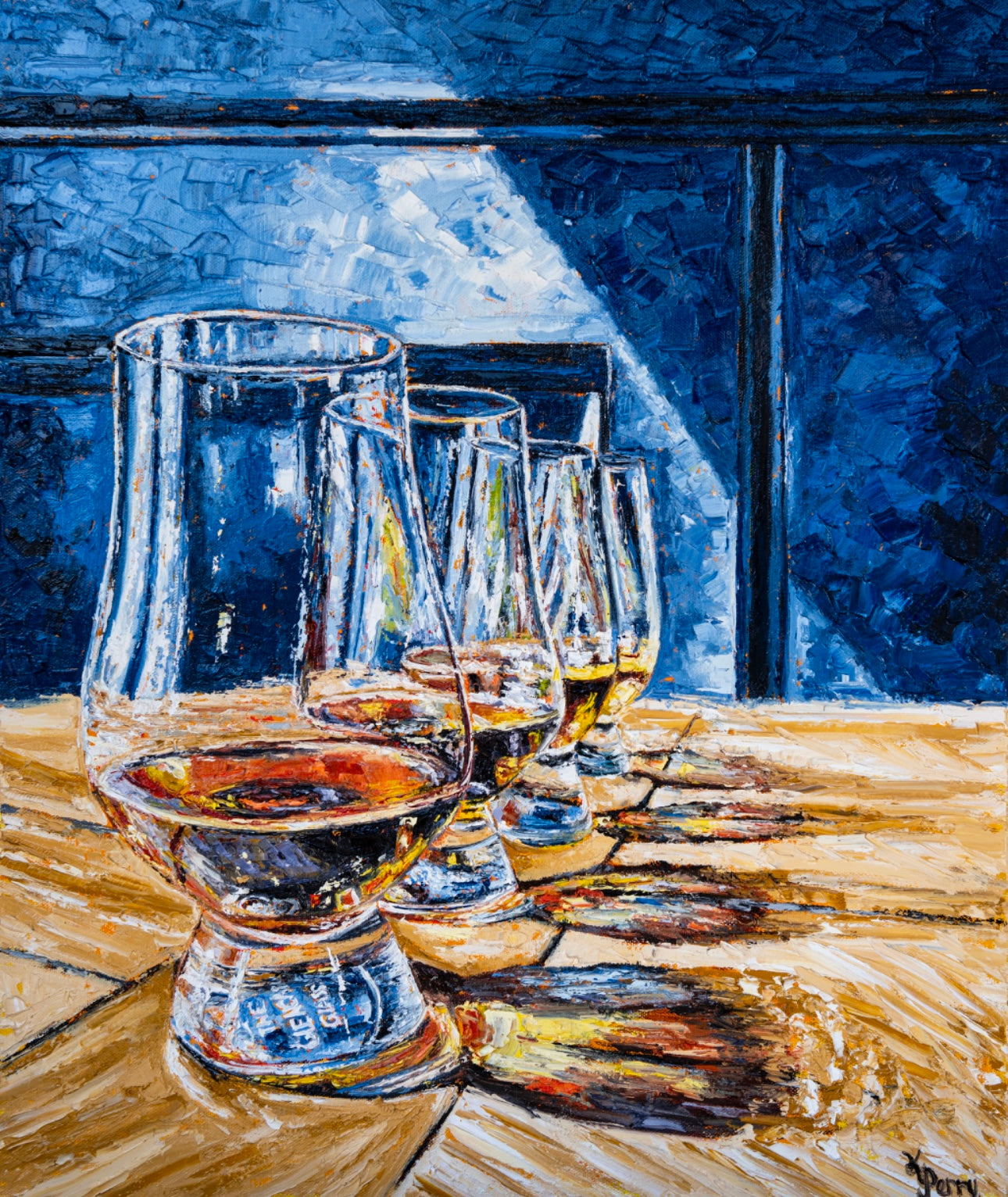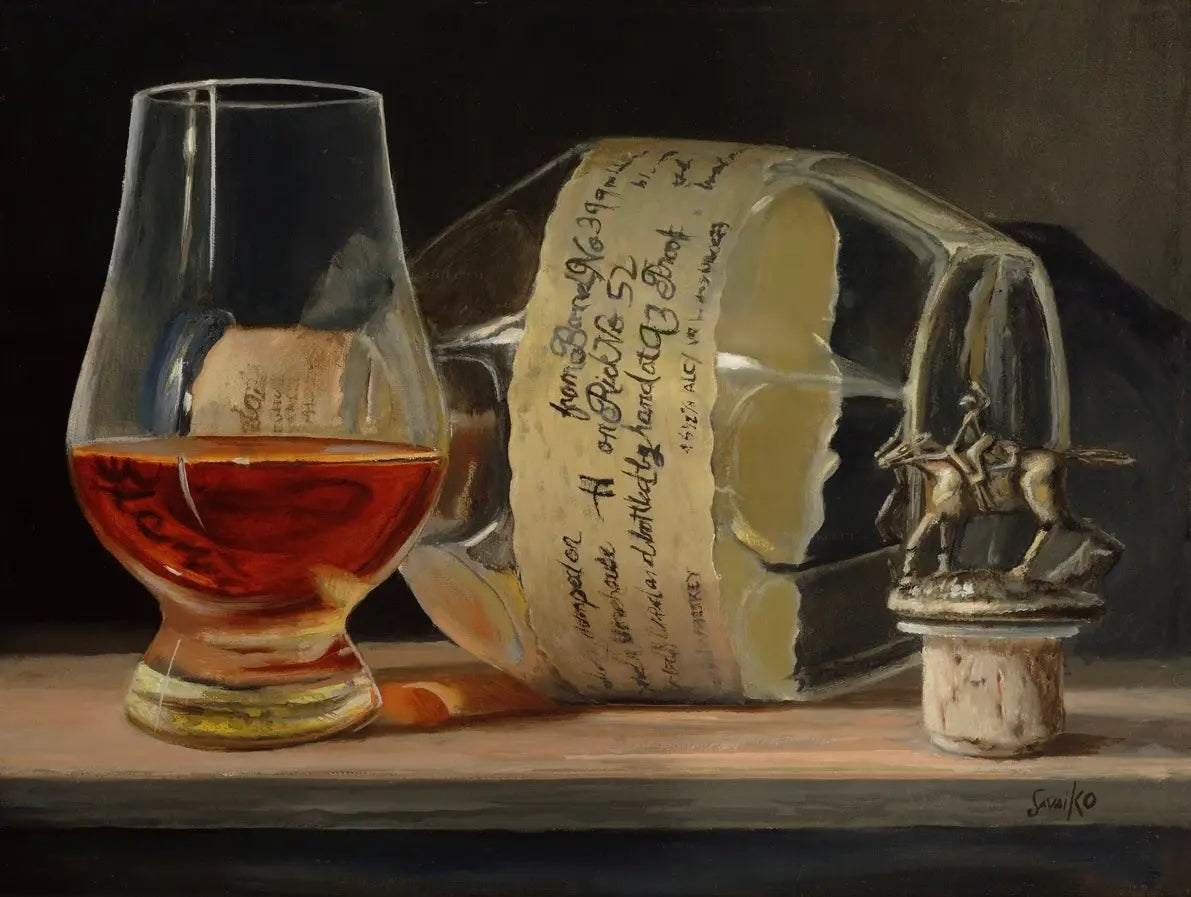Whiskey Art as a Statement: Exactly How It Improves Home Décor
Whiskey Art as a Statement: Exactly How It Improves Home Décor
Blog Article
The Value of Whiskey Art in Celebrating Heritage and Craftsmanship in the Beverage Sector
The intricate relationship between scotch art and the party of heritage and craftsmanship within the beverage market can not be overemphasized. With attentively created bottles and labels, bourbon brands encapsulate their historical roots and the artisanal abilities that specify their production methods.
The Historical Roots of Whiskey
At the heart of bourbon's allure lies an abundant tapestry of historic origins that trace back to ancient worlds. The origins of bourbon can be linked to the purification techniques of the Sumerians and Babylonians around 2000 BCE, where very early kinds of fermented grain drinks started to emerge. It was in the Center Ages that the art of purification advanced considerably, particularly in Ireland and Scotland, leading to the creation of bourbon as we understand it today.
The term "scotch" itself stems from the Gaelic word "uisce beatha," indicating "water of life." This expression underscores the social value of scotch in Celtic cultures, where it was frequently related to rituals, celebrations, and common bonding. By the 15th century, distillation came to be an identified craft within reclusive neighborhoods, leading the method for the facility of lawful distilleries.
As profession paths broadened, whiskey's appeal expanded, going beyond regional boundaries and capturing the interest of aficionados worldwide. Whiskey Art. This historic journey mirrors not only the craftsmanship behind whiskey production but also its important duty in social and social contexts, noting it as a substantial beverage throughout history
Artistic Expression in Branding
Scotch branding stands as a compelling junction of virtuosity and commerce, where visual identity plays a vital duty in forming consumer assumption. The visual appeals of whiskey labels, packaging, and advertising and marketing products reflect not only the brand's tale however additionally its core values and heritage. Via imaginative expression, distilleries communicate a story that reverberates with consumers, evoking feelings and sparking links.
The usage of color, typography, and images in branding offers to differentiate products in a saturated market. Typical themes might stimulate a feeling of credibility and workmanship, while modern-day layouts can symbolize technology and forward-thinking. This tactical artistic direction enhances brand name acknowledgment and commitment, enabling consumers to forge an individual partnership with the bourbon they pick.
In addition, imaginative expression in branding commonly serves as a celebration of local heritage. Distilleries regularly include regional icons or historic referrals into their designs, creating a sense of location that invites consumers to take part in a wider social experience. Inevitably, the artistry behind bourbon branding not just improves aesthetic appeal however also improves the general narrative of the brand, promoting a much deeper recognition for the craftsmanship and heritage ingrained in each bottle.
Craftsmanship in Container Style
The virtuosity noticeable in bourbon branding expands past aesthetic identification to encompass the craftsmanship associated with container design. Each container serves as a vessel not just for the spirit within, yet also for the story it informs regarding its quality, custom, and origin. The design procedure needs precise interest to information, as components such as product, shape, and closure add significantly to the general perception of the scotch.
Craftsmanship in container design includes picking top notch glass that can boost the whiskey's shade and quality, while likewise giving a tactile experience for the customer. The shape of the container have to be both cosmetically attractive and useful, often showing the heritage of the brand. Numerous distilleries select special forms or embossed logo designs that stimulate a sense of authenticity and history.
Additionally, the label style and my sources typography play a vital duty in interacting the brand name's narrative. Limited Edition. A well-crafted container not only captivates the consumer's eye however also enhances the brand name's commitment to quality and custom. By doing this, the workmanship of container layout becomes an essential aspect of the scotch experience, combining artistry with a profound regard for heritage
Cultural Relevance of Whiskey Art
Celebrating custom and craftsmanship, the social relevance of scotch art goes beyond plain appearances, linking with the historic and social narratives of the areas from which it comes from. Each bottle works as a canvas, depicting the one-of-a-kind tales, mythology, and customs that have shaped regional whiskey-making methods. The detailed styles commonly mirror the heritage of the distillers, including signs and concepts that reverberate with the society and values of their communities.

Additionally, whiskey art plays a vital duty in common gatherings and events, working as a substantial web link between individuals and their shared experiences. By valuing the artistry in bourbon product packaging, customers cultivate a deeper understanding and respect for the craft, inevitably improving their satisfaction of the beverage itself.
Modern Trends in Scotch Discussion
In current years, the discussion of bourbon has actually progressed to mirror modern tastes and fads while still honoring standard craftsmanship - Whiskey Art. Distilleries are progressively concentrating on visual elements that improve the general drinking experience, connecting the space in between heritage and modernity
Cutting-edge bottle designs have emerged, frequently incorporating sustainable materials and artistic tags that inform engaging stories. Lots of brands currently team up with local musicians, infusing their products with special visual expressions that resonate with customers. In addition, limited-edition releases are often packaged in collectible weblink containers, adding worth and charm for connoisseurs.

Conclusion
In final thought, bourbon art serves as a crucial channel for revealing the heritage and craftsmanship fundamental in the beverage industry. With elaborate branding, innovative bottle layouts, and culturally considerable imaginative elements, bourbon brands properly recognize their traditions and link with consumers.


Craftsmanship in bottle layout includes picking top quality glass that can boost the bourbon's shade and clearness, while likewise providing a responsive experience for the customer. In this way, the craftsmanship of container design comes to be an essential facet of the scotch experience, merging creativity with an extensive regard for heritage.
In verdict, scotch art serves as an important channel for revealing the heritage and workmanship inherent in the beverage sector.
Report this page